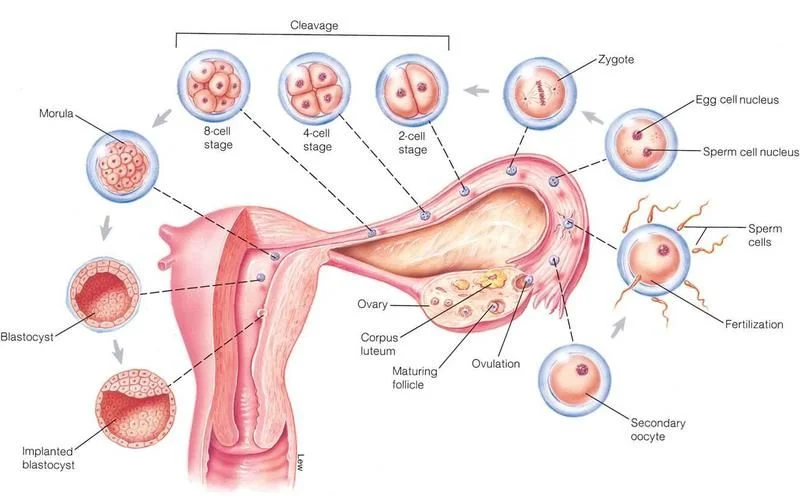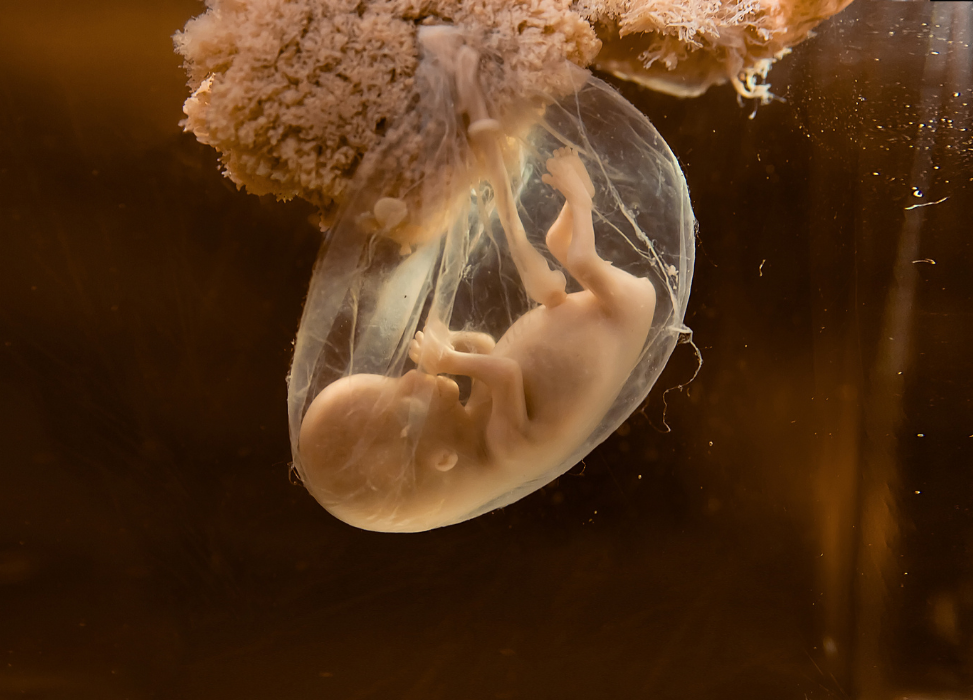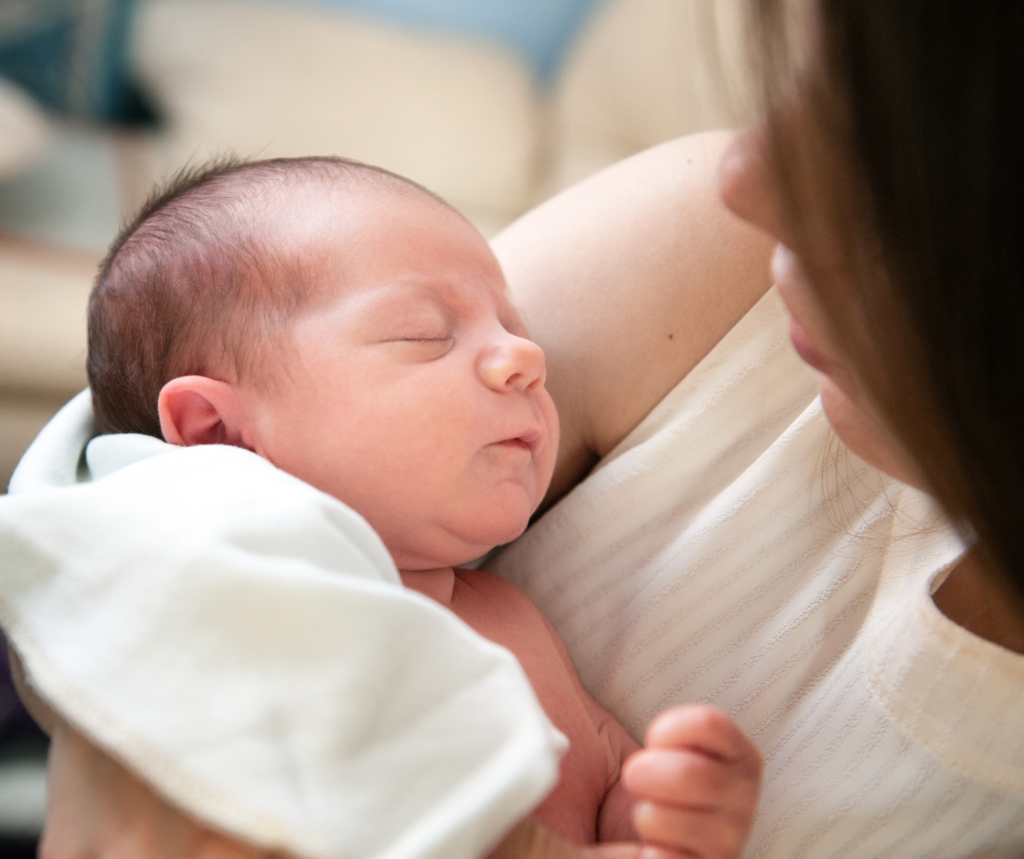What happens during pregnancy and how quickly do human beings develop?
Did you know that at the time most women first learn they are pregnant (around 6 weeks), the baby’s heart has been beating for two weeks? At 6 weeks, the baby’s organs are already formed and the brain is developed enough to controls the baby’s movements.
Day 1: Fertilization: After the mother’s ovary releases an ovum, a sperm cell from the father combines with the mother’s ovum to form one cell with the complete DNA of a new, unique human being. That single cell is a human being. Fertilization usually happens in one of the mother’s fallopian tubes, which connect her ovaries and uterus. After fertilization, nothing new is added to the human being but oxygen, nutrition, and time. (1)
Days 2-10: The new human being grows rapidly as his or her cells continuously divide. At the same time, he or she travels down the fallopian tube to the uterus. Approximately a week after fertilization, the new human being implants in the wall of the uterus to absorb nutrients and oxygen. During implantation, the baby releases a hormone to signal his or her presence to the mother’s body, suppressing her menstrual cycle and preparing her body to sustain the baby and pregnancy.

Zygote. This cell results from the union of an oocyte and a sperm during fertilization. A zygote is the beginning of a new human being (i.e., an embryo).1
Day 28: The baby’s heart is beating regularly; foundations of the brain, spinal cord, and nervous system are established; and arms, legs, eyes, and ears have begun to show. (2)
Days 42-49: The baby’s brain is operating and controlling the baby’s movements. Teeth and taste buds form and the baby swallows amniotic fluid and sometimes hiccups.(3,4) Swimming in the amniotic fluid, the baby now looks like a miniature human infant.(5,6) The tiny heartbeat can now be detected on ultrasound. Many women first learn that they’re pregnant at about this time.

Third Month (from 9-12 weeks): Unique fingerprints develop and never change.(7) The baby now sleeps, awakens, and is very active. The baby’s gender can be visually determined, and family resemblances may appear. All organs function by the end of the month.(8) The baby just needs time to grow and strengthen his or her organs – especially the lungs – before he or she can be born and survive outside the womb.
20 Weeks: The baby is about halfway through a normal, full-term pregnancy. His or her lungs are still not developed enough to function without help outside the womb, but our current technology has been able to help babies born as young as 19 weeks survive.
Important note: Scientists and doctors measure pregnancy from the beginning of the mother’s last menstrual period (LMP), which is actually about two weeks before a baby is conceived. In the timeline above, we measured from conception.

- “The Drama of Fetal Development”, American Baby. Jan. 1989. p. 45. Print
- Moore, Keith L. and Persaud, T.V.N. The Developing Human: Clinically Oriented Embryology. 7th edition. Philadelphia: Saunders 2003, p. 2.
- Sadler, T.W. Langman’s Medical Embryology. 7th ed., Baltimore: Williams & Wilkins, 1995. p. 341 Print
- deVries, J.I.P. et al, “The Emergence of Fetal Behavior.” Early Human Development. Vol 12. 1985, p. 108 Print
- Valman, Pearson. “What the Fetus Feels.” British Medical Journal. p. 234 Print
- Mayo Clinic Family Health Book. 3rd ed. Harper Resource, 2003, p. 269Print
- Babler WJ. 1991. Embryologic development of epidermal ridges and their configurations. In: Plato CC, Garruto RM, Schaumann BA, editors. Dermatoglyphics: science in transition. New York: Wiley-Liss. p. 95-112.
- Cunningham, MacDonald, Grant, Williams Obstetrics. 18th ed., p. 90 & 103 PrintWEEK 6
Source: calrighttolife.org
